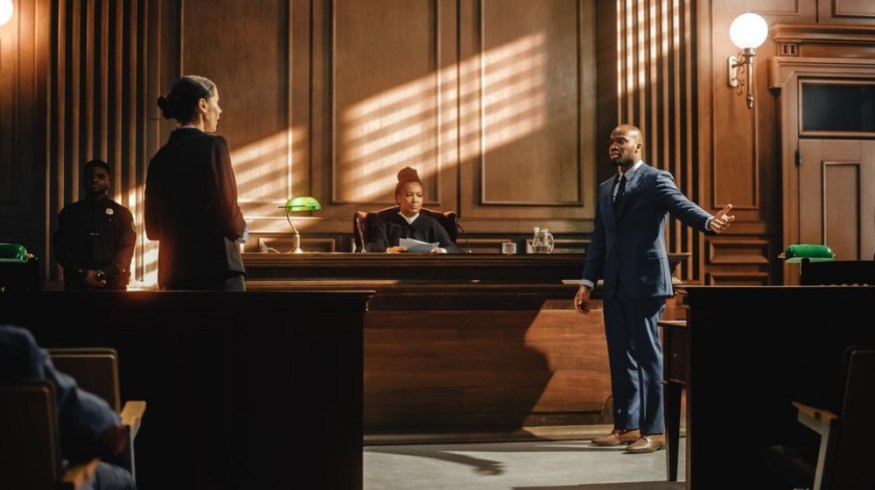
Understanding Point of View in Film and Video
Point of view determines how your audience experiences your visual world. Take control of your project with these storytelling approaches.
Point of view (POV) generally refers to a shot that directly represents a character’s viewpoint—we see only what they can see.

However, there’s another form of point of view in storytelling—the point of view from which we see the character’s story.
All films and television shows present their stories from a certain point of view, and if that changes, it can completely alter the story—or, at least, how the audience feels about a character or situation.
Consider the following example. We are in an open-plan dining room, and a husband and wife are arguing near the kitchen sink. The woman’s sister is also in the room, but she’s further away playing with a newborn baby boy.
On the stairs, listening out of view, is a young girl, who’s the daughter of the husband and wife. The argument is about the possibility of the man losing his job because of his negligence at work.
If the camera captures both actors in the frame, you can say that the scene is objective—there’s no bias toward a particular character. We’re watching everyone react, and the camera itself isn’t too close to the action.
However, if the camera focuses primarily on the man and includes a shot of him looking at his sister-in-law, then cutting back to his reaction, the shot becomes subjective.
We’re focusing more on the man’s point of view rather than the woman’s. The director is telling us to care more about him than her. A fully subjective shot would be from the man’s eyes, revealing only what he sees.
While this rarely, if ever, happens in feature films, with the rise of sports cameras, many YouTube filmmakers have created action videos using this point of view that mimics this technique in video games.
Each shot in a film expresses a point of view, which often changes—sometimes with each new shot. The point of view, or narrative stance, mostly goes unnoticed by the audience.
However, altering the point of view can profoundly affect how the audience interprets any scene and character.
For example, consider the fountain scene from Atonement.
Then, watch the exact moment from another point of view.
Think about all of the possible points of view for your scene and how they can affect your story. Determining the point of view is one of the director‘s most significant contributions to a film.
Let’s look at the different points of view you can use in your film.
First-Person Point of View (Subjective)
First-person point of view restricts what the audience sees to the viewpoint of a single character. Extensive use of this subjective viewpoint can be problematic because we can never see our point-of-view character’s reactions.
Films (and there aren’t many) that use first-person POV usually focus on the characters that we can see rather than the character who sees them. However, it’s tough to connect with a character without seeing their face.
This is why many superhero films ultimately remove the hero or heroine’s mask at one point or another.
Third-Person Limited Point of View (Objective)
The third-person limited point of view presents the action from the perspective of an ideal observer. It’s the style of narrative most common in TV and film.
An example would be an over-the-shoulder shot or a mid-shot of two characters in a dialogue. Most of the time, it appears in combination with subjective passages (like the husband arguing with his wife example).
The term “limited” refers to the idea that we only know a few characters’ feelings and thought processes, rather than the entire ensemble. When we start to understand more about supporting characters because of a narrator, the film moves into omniscient point of view.
Omniscient Point of View (Objective)
An omniscient point of view reveals what the characters are thinking. This requires some narration, voice-over, or graphics. An omniscient narrator or POV will tell the story without attaching it to a single character or group of characters.
As you can imagine, it’s not a popular choice because a film audience needs a visual representation of a character to form a connection.
This point of view was successful in the television series Desperate Housewives, as the narrator, Mary Alice Young, died at the beginning of the series. As an all-knowing god-like figure, Young knows everything that happens and often recaps information the viewers might have missed.
Filmmakers can combine and alter these perspectives to create more intriguing projects. For example, you can categorize The Shawshank Redemption as an omniscient narrative since Red tells the story as an all-knowing narrator who knows the ending. However, Red appears in the story, thus negating the core principle of being an omniscient narrator.
A few more filmmaking gems for you:
- Learn from the Masters: The Best Documentaries About Filmmaking
- The Future of Filmmaking: Creating Short Films Within a PS5 Video Game
- The 5 Genre Filmmaking Elements Every Rom-Com Needs
- Jim Cummings’ YouTube Series Answers All Your Filmmaking Questions
- 10 Filmmaking News Sites You Should Visit Everyday
Cover image via Gorodenkoff.





